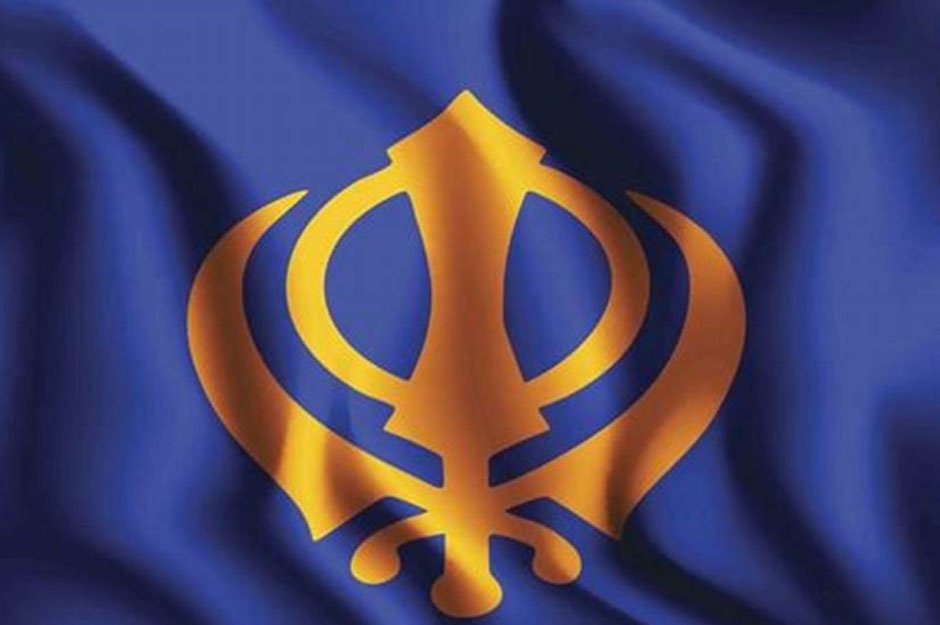Skip to the good bit
ToggleSikhism, one of the world’s youngest major religions, is deeply rooted in spiritual philosophy and divine teachings. Established in the late 15th century by Guru Nanak Dev Ji and further shaped by the ten Sikh Gurus, Sikhism emphasizes equality, selfless service, and devotion to one God. Throughout its history, the faith has been represented by various symbols, each carrying profound meanings that reflect the core principles of Sikhism. These sacred symbols not only serve as identifiers of Sikh identity but also provide guidance and inspiration to adherents worldwide.
In this article, we will explore the Sikhism symbol and its significance, along with other essential emblems of the faith.
The Khanda: The Primary Symbol of Sikhism
The Khanda is the most recognized and revered symbol of Sikhism. It consists of four main components, each carrying a deep meaning:
- The Double-Edged Sword (Khanda): Positioned in the center, this symbolizes divine knowledge, truth, and justice. It represents the cutting away of falsehood and illusion, leading to enlightenment.
- The Chakkar (Circular Disc): Surrounding the Khanda, the Chakkar signifies the eternal nature of God, unity, and the interconnectedness of all creation. It represents the oneness of humanity and the infinite nature of Sikh teachings.
- The Two Kirpans (Crossed Swords): Flanking the Chakkar, the two Kirpans stand for Miri (temporal authority) and Piri (spiritual authority). They emphasize the balance between worldly responsibilities and spiritual devotion, urging Sikhs to uphold righteousness while serving society.
The Khanda is prominently displayed in Sikh places of worship (Gurdwaras), on flags (Nishan Sahib), and on Sikh artifacts, signifying strength, courage, and unwavering faith.
Ik Onkar: The Foundational Concept of Sikhism
The Ik Onkar symbol, meaning “One God,” is a fundamental concept in Sikhism. It is a combination of two words:
- Ik (1): Represents the singularity of God, emphasizing monotheism.
- Onkar: A combination of “Om” and “Kar,” signifying the Supreme Being who is beyond form and time.
Ik Onkar appears at the beginning of the Guru Granth Sahib, the holy scripture of Sikhs. It reminds us of God’s omnipresence and underscores the idea that all creation emanates from one divine source, promoting unity and equality.
The Nishan Sahib: The Sikh Flag
The Nishan Sahib is the sacred flag of Sikhism, hoisted outside every Gurdwara worldwide. It features the Khanda emblem on an orange or blue background, symbolizing the sovereignty and presence of Sikh faith.
- Saffron (or Orange) Color: Represents sacrifice, courage, and wisdom.
- Blue Color (occasionally used): Signifies devotion and spirituality.
- The Tall Flagpole: Stands as a beacon for those in need, signifying that Gurdwaras offer sanctuary and assistance to all.
The Nishan Sahib plays a vital role in Sikh gatherings and processions, reflecting the principles of service (Seva) and unity.
The Five Ks: Essential Articles of Faith
The Five Ks (Panj Kakar) are physical symbols worn by baptized Sikhs (Amritdhari) as a declaration of faith and commitment to Sikh principles:
- Kesh (Uncut Hair): Symbolizes acceptance of God’s will and devotion to natural form.
- Kangha (Wooden Comb): Represents cleanliness and discipline.
- Kara (Iron Bracelet): A circular band denoting infinity and divine protection.
- Kirpan (Ceremonial Sword): Stands for justice, self-defense, and protection of the oppressed.
- Kachera (Cotton Undergarment): Signifies self-discipline and moral integrity.
These five symbols reinforce a Sikh’s spiritual and ethical conduct, promoting a disciplined lifestyle aligned with Sikh values.
The Sikh Emblem on Gurdwaras and Artifacts
Apart from the Khanda, Ik Onkar, and Nishan Sahib, various Sikh emblems are engraved on Gurdwara entrances, holy scriptures, and personal items such as rings, turbans, and clothing. These sacred symbols serve as daily reminders of Sikh ethics and teachings.
For instance, Gurmukhi Script inscriptions like “Waheguru” (meaning “Wondrous God”) are often inscribed on walls, reinforcing devotion and spirituality.
The Importance of Sikh Symbols in Daily Life
Sikh symbols are not just decorative elements; they hold profound spiritual and moral significance. They:
- Foster Identity: Sikh symbols distinguish followers and help them maintain a strong connection to their heritage.
- Encourage Discipline: Wearing the Five Ks, for example, reminds Sikhs of their commitment to righteousness and self-control.
- Promote Unity: Emblems like the Nishan Sahib unite Sikhs under a common banner, emphasizing their collective responsibility towards humanity.
- Inspire Courage and Faith: Symbols like the Khanda serve as a call to defend justice and uphold truth in all aspects of life.
Conclusion
The sacred symbols of Sikhism are more than religious icons—they embody the principles of oneness, justice, devotion, and selfless service. From the Khanda and Ik Onkar to the Five Ks and Nishan Sahib, each symbol plays a crucial role in shaping the identity and spirituality of Sikh followers.
By understanding these symbols, both Sikhs and non-Sikhs can gain deeper insights into the essence of this remarkable faith—one that advocates love, equality, and service to humanity. Whether worn, displayed, or inscribed, these symbols continue to inspire generations, keeping the divine teachings of Sikhism alive in an ever-changing world.







